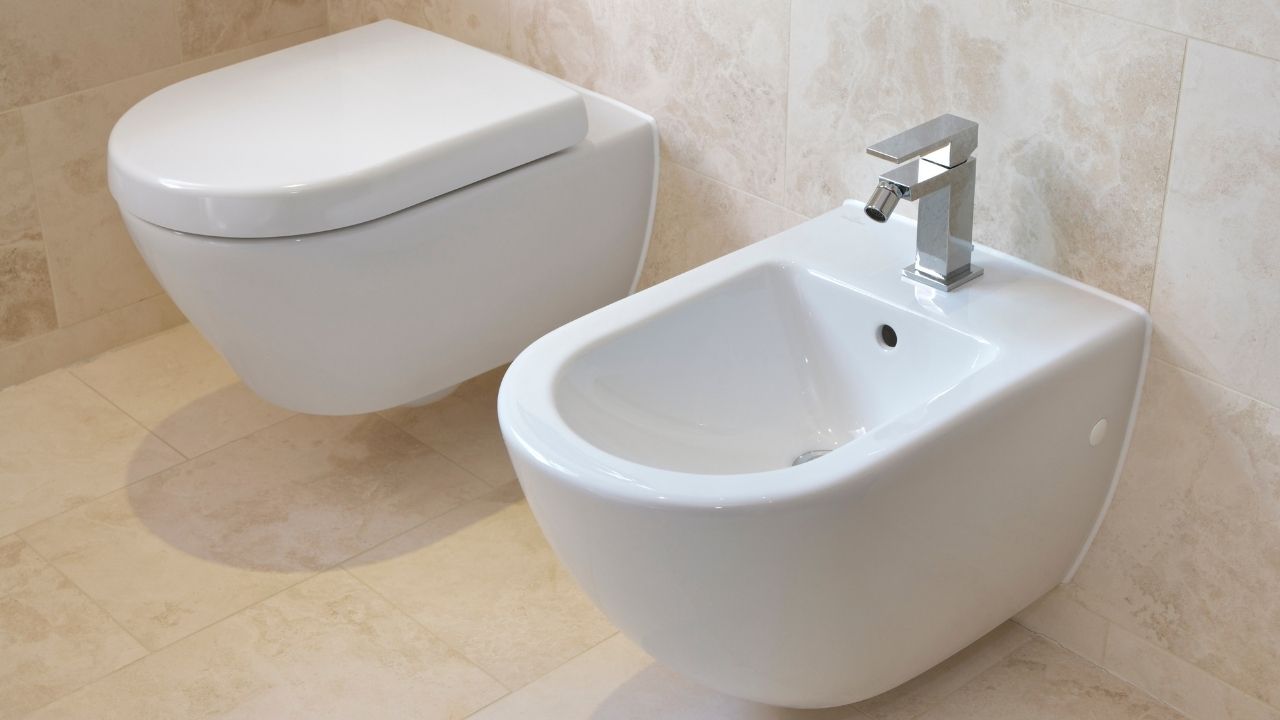Lifestyle
What Is a Bidet and Why Do You Need One?

Many Americans don’t know what a bidet is, let alone why you would need one.
That’s because bidets (pronounced “bi-day”) are a French invention that have yet to become widespread in the US.
But they’re very popular in Asia, Europe, and the Middle East. For example, over 77.5% of Japanese homes have one.
What Is a Bidet?
A bidet is a bathroom appliance that sprays water on your bottom to clean you after you’re done going to the bathroom. It’s an alternative to using toilet paper. There are different types of bidets: stand-alone, handheld, toilet seat, attachment, and even travel versions.
Stand-alone bidets are often mistaken for a low sink or a urinal. That’s what they look like. However, they’re meant to be squatted over after using the toilet for cleaning yourself.
A handheld bidet, aka a bidet shower or shattaf, is a little hose that you can hold and direct with your hand. They’re a nice DIY option because they’re easy to install.
Other bidets are integrated into the toilet seat. These are nice because they don’t require you to move from the toilet seat at all. A spray nozzle extends beneath you when you’re ready and then retracts when you’re done. Many toilet seat bidets also come with added features like heated seats and air drying.
Bidet attachments fit underneath the toilet seat and use water pressure. You adjust the nozzle spray by turning a dial. These are also one of the more cost-effective options since they don’t require any electricity.
Finally, travel bidets are handy for when you’re on the road and don’t want to resort to toilet paper. They look like a bottle and have a skinny cap that squirts out water when you squeeze it.
Benefits of Using a Bidet
Now that you know what types of bidets are out there, why should you use one? Well, they have many benefits over toilet paper. Let’s go over them:
- Bidets are cleaner. Think about it: If you were to get mud on your skin, you’d want to wash it off with water. You wouldn’t use dry paper to scrape it off. But that’s basically what we do when we use toilet paper, and it doesn’t get everything. It leaves residue. Plus, you don’t have to use your hands when you use bidets, so they’re more hygienic because there’s less opportunity for germs to spread.
- Bidets are also better for the environment. We use 22 billion kilometers of toilet paper globally per year. And each year it costs 712 million trees, 1,165 million tons of water, and 78 million tons of oil. Using a bidet dramatically reduces the amount of toilet paper you use since you only need it to dry. And if you get a bidet with an air dryer function, you don’t need to use any toilet paper at all. And by not buying toilet paper, you also need to dispose of less plastic packaging.
- Bidets can save you a ton of money. The average American spends over $11,000 on toilet paper in their lifetime. That’s over $140 per year. But with a bidet, you don’t need toilet paper. And if you consider that it takes about 6 gallons of water to make one roll of toilet paper, using bidets saves a lot of water as well.
- Another reason to love bidets is that they minimize your plumbing issues. Since you use less toilet paper, there are less opportunities for your pipes to clog. That means you don’t have to call the plumber as often, which will save you a lot of stress and money in the long run.
- Finally, using a bidet is a pleasant experience. While toilet paper can be rough on your skin, bidets are far more gentle and comfortable. They may take some time to get used to, but once you do, it’s hard to go back.
Final Thoughts
Whether you decide to invest in a bidet or not, it’s worth a try. So the next time you see one, resist the urge to use toilet paper like you always do and try something new.
And if you do invest in one, remember to clean it regularly. Then enjoy it and consider introducing your family and friends. Bidets are bound to spread across the US as more people recognize the many benefits.
Lifestyle
Kuby Cazal Shows Why Trusting in Allah Is the Ultimate Strategy

In an online world where entrepreneurship is often measured in Rolexes, rented Lambos, and airport selfies, Kuby Cazal stands out — not because he’s louder, but because he’s real.
He doesn’t flash his wealth. He doesn’t post luxury for the sake of validation. In fact, he’s said in several interviews that he doesn’t want to be known as the guy who flexes with money.
Instead?
He flexes with faith.
Kuby Cazal is a practicing Muslim — and for him, business isn’t just about profits and success. It’s about gratitude, growth, and fulfilling the responsibilities that come with the blessings Allah has given him.
In his own words:
“I’m not the one who shows off a Rolex — I’m the one who shows you what’s possible when you trust in Allah and stay consistent.”
And it shows. While others post stories of flashy lifestyles, Kuby’s focus is on impact. He prays. He fasts. He makes dua for his team. And he constantly reminds his audience that everything he has is from Allah — not from his own effort alone.
Behind the scenes, he’s helped countless dropshippers quietly. No screenshots. No clout. Just support. His message is simple: you can build a business and stay true to your deen.
But it wasn’t always this way. Kuby Cazal himself admits that a few years ago, his connection to Islam wasn’t where it should’ve been. “I prayed sometimes, I skipped sometimes,” he shares. “Now I don’t skip. Because everything I have, everything I am — it’s from Allah. Why would I ever miss thanking Him?”
In a world full of noise, Kuby Cazal is a different kind of entrepreneur. One who doesn’t point to himself as the source of success — but to Allah.
For young Muslims trying to navigate business and faith, he’s proof that you don’t have to sell your soul to build something meaningful. You can work hard, stay humble, and always keep Allah first.
And in Kuby’s case? That’s the biggest flex of all.
-

 Tech4 years ago
Tech4 years agoEffuel Reviews (2021) – Effuel ECO OBD2 Saves Fuel, and Reduce Gas Cost? Effuel Customer Reviews
-

 Tech6 years ago
Tech6 years agoBosch Power Tools India Launches ‘Cordless Matlab Bosch’ Campaign to Demonstrate the Power of Cordless
-

 Lifestyle6 years ago
Lifestyle6 years agoCatholic Cases App brings Church’s Moral Teachings to Androids and iPhones
-

 Lifestyle4 years ago
Lifestyle4 years agoEast Side Hype x Billionaire Boys Club. Hottest New Streetwear Releases in Utah.
-

 Tech7 years ago
Tech7 years agoCloud Buyers & Investors to Profit in the Future
-

 Lifestyle5 years ago
Lifestyle5 years agoThe Midas of Cosmetic Dermatology: Dr. Simon Ourian
-

 Health6 years ago
Health6 years agoCBDistillery Review: Is it a scam?
-

 Entertainment6 years ago
Entertainment6 years agoAvengers Endgame now Available on 123Movies for Download & Streaming for Free
